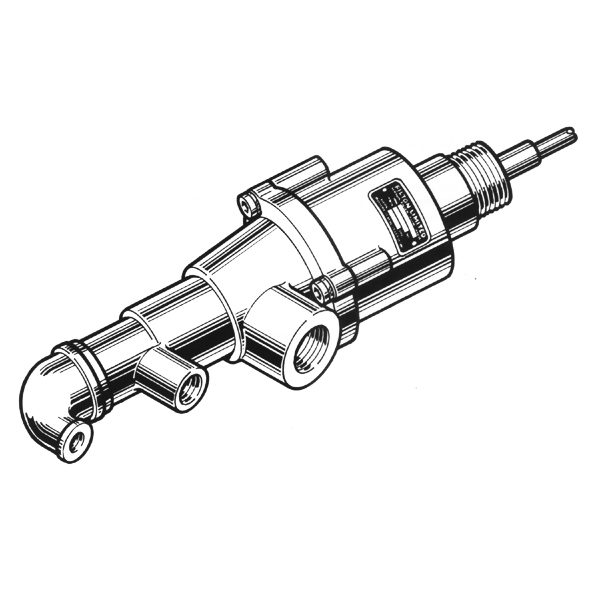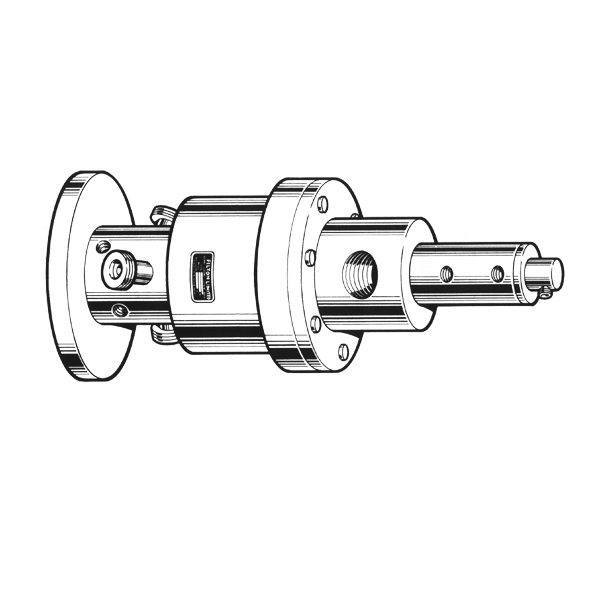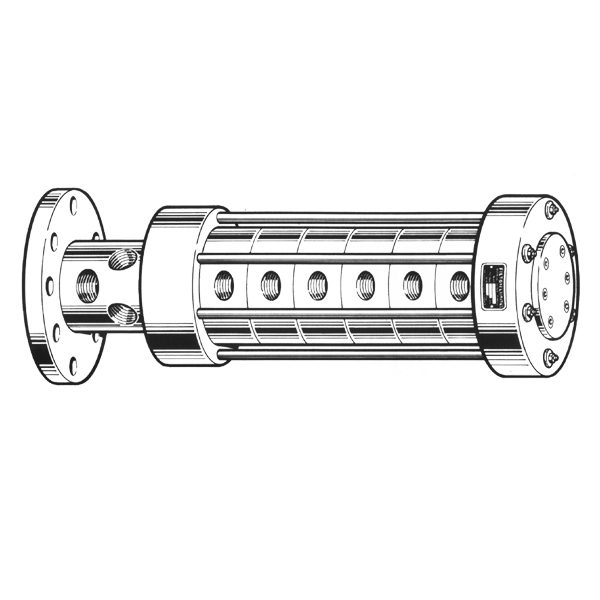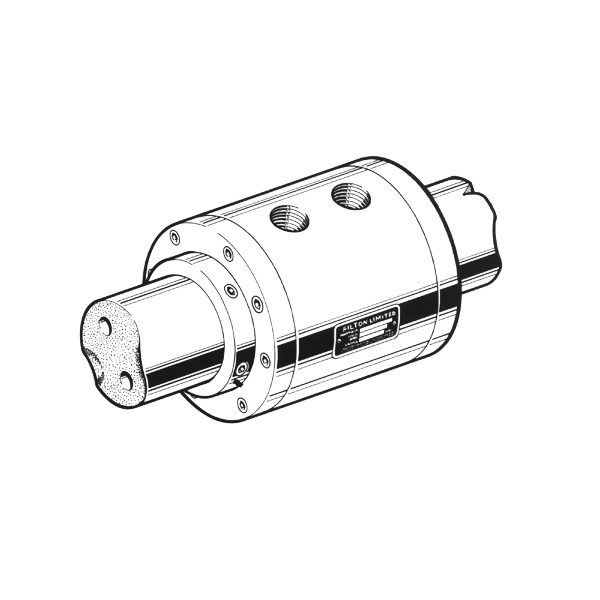Filton® Special Rotary Union Models
A wide range of specialty rotary unions are also available depending on your particular requirements. A few of the more common examples include:

1) 3-Port Rotary Unions
These unions are manufactured on a special basis but can at times be made available using the basic bearing housing and main seal from any of the standard rotary union offerings. The example shown in the diagram illustrates a typical construction using two rotating centre tubes for three flow channels. Depending on the conditions of the application, Filton® Bellows Seals or Filton® Mechanical Seals are used between each flow channel. If it is essential to prevent any “cross-talk” between channels, then a double seal having a bleed to atmosphere can be incorporated.

2) Piggyback Rotary Unions
For certain applications, it can be useful to keep multi-flow channels completely separate when using different fluids. The example shown illustrates a combined unit having two channels for hydraulic oil and piggybacked on the outboard end is a rotary P.N. union for a pneumatic service. It is possible to apply this principle to more than three channels. In some cases, six channel main units with two channel rotary unions piggybacked have been designed (making eight channels available in total).

3) Liquid Bottling / Canning Rotary Unions
designed rotary unions are often required. Multichannel systems are generally used with facilities for compressed air, carbon dioxide, nitrogen and C.I.P. (cleaning-in-place) systems. The example shown illustrates connections for C.I.P. compressed air, carbon dioxide and (on the top) an electrical slip ring system for instrumentation and control. Connections are available for any of the standard C.I.P. systems including RJT, ISS, DIN or TRICLOVER.

4) Multi-Port Rotary Unions
In certain situations, the machinery requirements may be impossible to satisfy with one of the standard rotary unions offered in this manual. It may become necessary to custom manufacture a multi-channel design. A wide range of multi-port design options are available in various materials including aluminum, bronze, carbon steel, stainless steel and nickel alloys. The example illustrated is a six-channel unit built on a sectional body basis with a tie bar system. Solid body designs are also used depending on the application and specifications.
Examples of applications where multi-port rotary unions are useful include a vast range of cooling, heating, hydraulic, pneumatic and vacuum conditions. It is also feasible to design unions for the transfer of electrical services including power slip rings and brushes or instrumentation and control mechanisms. Please contact us for additional information.

5) Overshaft Rotary Unions
The rotary unions outlined in this manual are designed for connecting to the end of a rotating shaft. There are certain applications, however, where end access is impossible and it becomes necessary to transfer services at some point along the shaft. The diagram shown illustrates an example of an overshaft rotary union with two services passing into and axially along the machine shaft. In certain conditions, it is also possible to incorporate the rotary connection into the rotary union sleeve for transferring services externally along a shaft.
Note: As a general guideline, it is recommended to make every effort to obtain shaft end access whenever possible. Overshaft rotary unions are costly and can require major machinery dismantling for installation, servicing and removal operations.
For additional information about these and other models, please contact us.
| Name | Model | Left or Right | Nominal Size | Nominal Size in Inches | Style | hf:att:pa_model | hf:att:pa_left-or-right | hf:att:pa_nominal-size | hf:att:pa_nominal-size-inches | hf:att:pa_style |
|---|
Please select from the list above or contact us for additional information.
